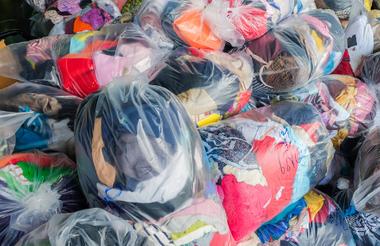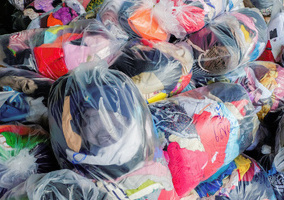Environmental charity WRAP has warned that sector retailers would see costs rise by £19m per year if the textiles collection industry were to collapse.
WRAP warned in a report this week that most used clothes collectors, known as rag traders by charity retailers, are currently operating at a loss and out of public service.
The cost for collectors and sorters to gather and process the UK’s worn-out textiles was previously balanced out by the money they made on selling reuseable items overseas, it said, but the market for these clothes has deteriorated.
A spokesperson for WRAP told Civil Society that the collapse of the collection industry would lead to charities paying £19m more a year to dispose of unsellable clothes donated to their shops.
They added that the cost to charity retailers would be much higher if they were prevented from operating altogether.
WRAP identified three solutions to help save the industry: advanced sorting and pre-processing facilities, extended legal responsibility for textile producers and redesigned take-back schemes for retailers.
Catherine David, incoming chief executive of WRAP, said: “This is an existential threat to the collecting, sorting and grading sector that’s been in the UK for more than a hundred years.
“The impact of this sector folding will be catastrophic. Generating and increasing the value of our worn-out clothing must be fast-tracked if the industry is to be salvaged.”
CRA: Rag prices ‘now stabilising’
Robin Osterley, CEO of the Charity Retail Association, supported WRAP’s call for policies to promote clothing durability and extended producer responsibility (EPR), which he said were “long overdue and will help underpin the continued success of charity shops”.
“That said, the UK’s textile collectors continue to provide a valuable service to charity shops by collecting unsold clothing stock either for reuse abroad or for recycling,” he added.
“The price paid by merchants has fallen dramatically over the past year, but prices are now stabilising.
“With some limited exceptions, charity shops continue to be able to access a reliable and good quality service from textile collectors.
“Public demand for second-hand clothing is booming and we have seen absolutely no signs of this grinding to a halt.
“The donation of clothing to charity shops is vital to driving forward textiles circularity and to raising much-needed funds to deliver charitable services.”
‘Unprecedented collapse’
Alan Wheeler, CEO of the Textile Recycling Association, said there had been an “unprecedented collapse” in global used clothing markets, leading to prices paid to charities dropping “dramatically”.
“Whereas charity shops might previously have earned a decent return on unsold clothing sold to traders, many are now doing well just to have it collected without charge,” he told Civil Society.
He said that, since the Covid-19 pandemic, other countries such as China were exporting more used clothing, meaning supply now outstrips demand.
“This coincides with a surge in ultra-fast fashion, resulting in more low-value garments that are difficult to resell and often only suitable for recycling—at a financial loss to collectors,” he said.
“Recovery will be difficult without expanding global recycling markets. We need to increase demand and value for lower-grade textiles by investing in both mechanical and emerging chemical recycling technologies, and improving the efficiency of sorting systems.”
Wheeler said the UK government had been slow to develop policy in this area but was hopeful its recently created Circular Economy Taskforce would recommend EPR and other measures.
Charity retailers expressed fears about the “dramatic” decline of the UK rag trade in last year’s Charity Shops Survey. To respond to this year’s survey, click here.
Related articles












